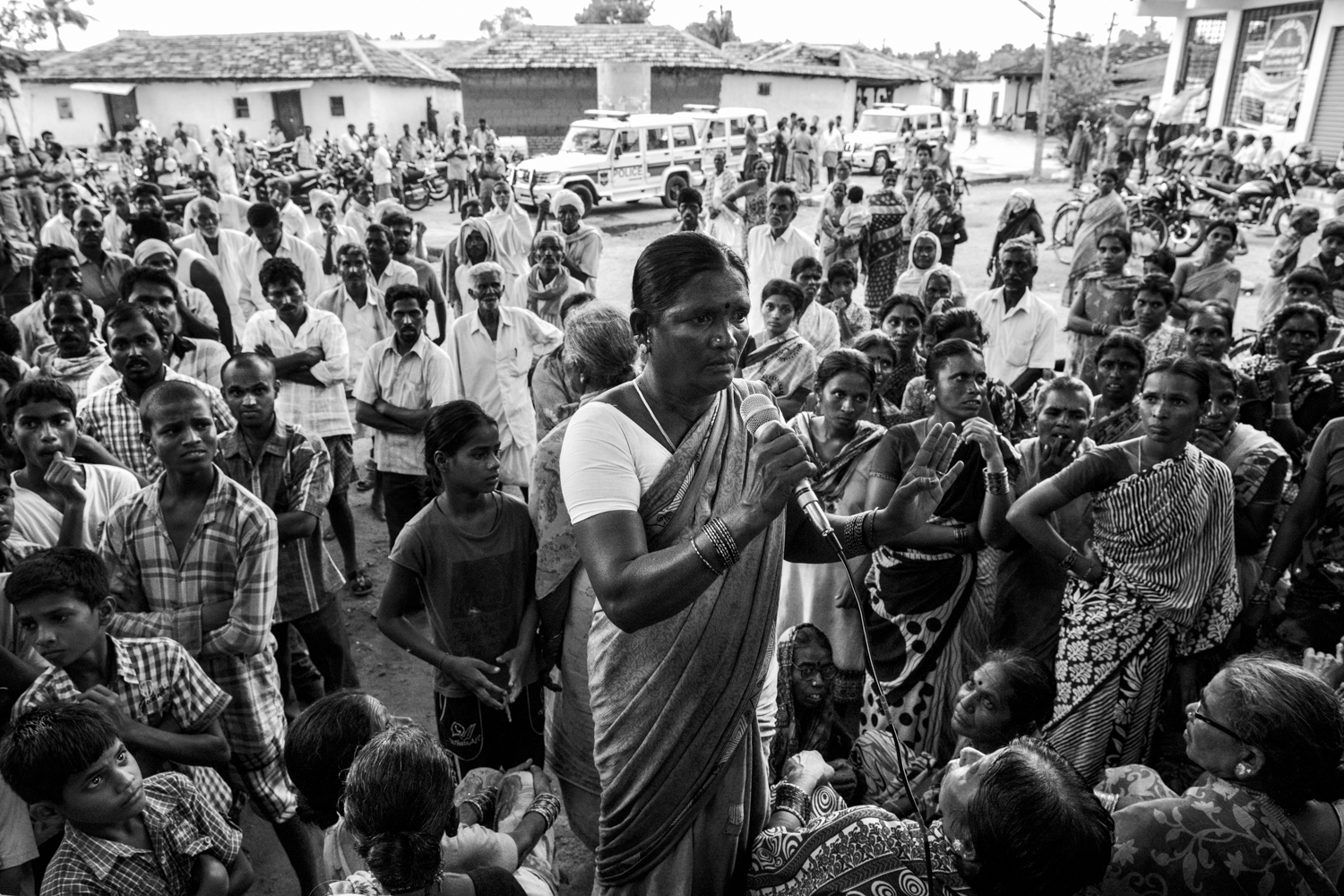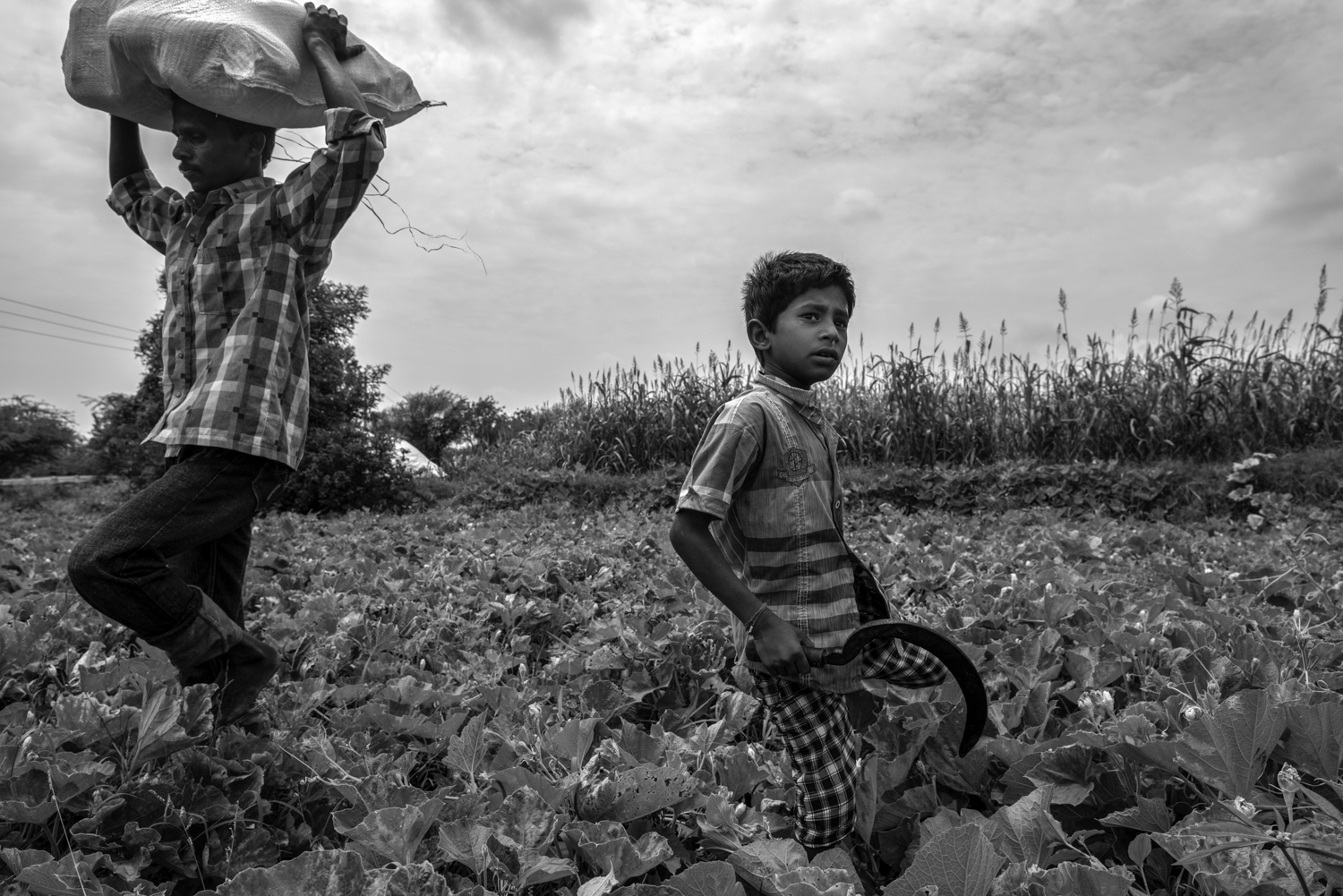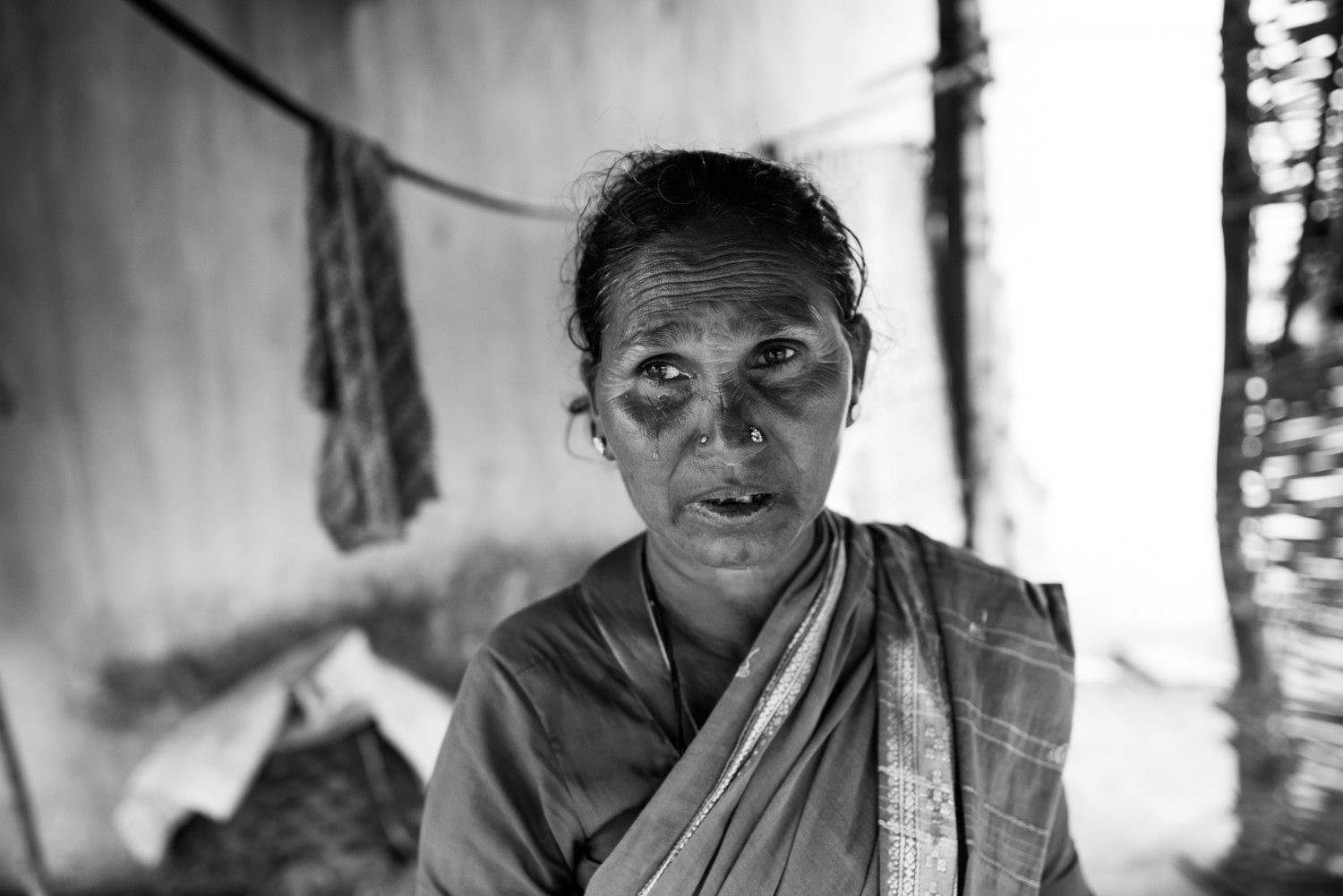In Mahabubnagar, the villages situated on either side of the Tungabhadra river—which was almost entirely dried up at the time of my visit—were dependent on a pit in the riverbed for their drinking water. The villagers had dug a five-feet deep cavity from which water had begun to bubble out and formed a small pool. I saw several boreholes in Medak district that the residents had dug in near their fields and houses. The digging of these boreholes was deemed illegal in October 2015, when the state government had temporarily banned the practice in specific parts of the state, including several regions in Medak and Mahaboobnagar districts. Residents of Lingareddypally village in Medak district told me that the digging required them to take unaffordable loans because of the high costs that they incurred in renting the digging equipment and the motor to pump the water out. However, their activities were to no avail because groundwater levels in the state had reached an all-time low.
The loss of crops due to the water crisis triggered a long procession of suicides in the state. According to data released by the National Crime Records Bureau, 1,358 farmers committed suicide in Telangana in 2015. As the drought affected the availability of fodder for cattle, farmers across the state were compelled to sell them for half their market price. In Medak, I observed that only a few villages had underground water, while the rest depended on water tankers, as is common practice across Telangana when there is a lack of groundwater. Each tanker served around the neighbouring villages, which meant that each family got no more than three canisters of water per day after standing in long queues. In addition to their woes because of the drought, the farmers also suffered delays in payments under the National Rural Employment Guarantee Act and in the implementation of loan waiver schemes. These compounded miseries reportedly resulted in a migration of nearly 1.4 million people from the districts of Mahabubnagar, Rangareddy, Medak, Nizamabad and Adilabad. With the heat wave in the state continuing for the third consecutive year in 2017, a report published in the web publication the News Minute in April 2017 states that a water crisis looms large this year as well.


















Since the second year of its creation in 2014, Telangana has been suffering from a water crisis and the main focus of development initiatives of the state government has been to mitigate this crisis. In 2016, the state government announced the construction of the Mallanna Sagar reservoir to irrigate drought-prone Medak, Nalgonda, Nizamabad, Warangal and Rangareddy districts. If constructed, the reservoir would result in the submergence of 14 villages and the displacement of 30,000 people. In order to acquire the 24,000 acres of land necessary for the project, the government relied on a notification, Government Order 123, which it had issued on 30 July 2015 for development projects in the state.
The notification allowed the government to purchase land from “willing land owners” for any purpose, including development projects, without adherence to the procedural requirements under the central Land Acquisition Act of 2013. Under the act, any acquisition of land requires a process that includes a social impact assessment and mandatory rehabilitation of all those affected by the acquisition, not only the land owners—neither of which is mandated under GO 123. The notification and efforts to initiate the acquisition sparked off protests across all 14 villages affected by the dam, which continued till July 2016. However, with the passage of time, only one village among the 14, Vemulaghat in Medak district, was left fighting against the land acquisition. On 5 January 2017, a division bench of the state’s high court quashed the notification and barred its use for land acquisition. The day also marked 215 days since residents of Vemulaghat began a relay hunger strike in protest of the Mallanna Sagar project. At least five villagers participate every day in the ongoing hunger strike at Vemulaghat.
A few days before the judgment, the Telangana state assembly passed a bill seeking to make state amendments to the central land acquisition law. Two months later, civil society members and organisations wrote to the president requesting him not to give his assent to the state amendment, citing several grounds, including that it is “in complete violation of procedural safeguards” and the “dispensation of key clauses of social impact assessment on arbitrary grounds.” However, the president gave his assent and on 17 May, the bill was notified in the state gazette and enacted into law. The villagers of Vemulaghat are still continuing their protest, seeking compensation under the terms of the central Land Acquisition Act for the 2,000 acres of land still owned by the farmers. However, one of their demands, that the state amendment not be enacted into law, has already been ignored. The day this story was published marked 393 days of the ongoing strike.















The experience of the residents of Aloor village in Mahabubnagar district may provide an explanation for the continuing struggle at Vemulaghat. In 2005, M Krishnaiah, a 50-year-old resident of the village, told me, the state government informed the village residents about the construction of the Ryalampadu reservoir in the region. The project would displace more than 1,200 families residing in the village, which lay in the catchment area of the reservoir. According to Krishnaiah, by 2009, all of residents had agreed to the terms of resettlement and rehabilitation offered by the government, which included financial assistance of Rs 40,000 for the construction of temporary houses and 750 days of guaranteed daily-wage employment.
In September 2016, Krishnaiah said, after the construction of the reservoir, the village residents were forced to leave on short notice because the reservoir had to be filled due to an unexpected cyclone. The villagers had to leave during a spate of heavy downpour and leave their crops behind, faced with a choice of taking either their crops or their belongings. More than eleven years have passed since the residents were notified about the displacement and the terms of their rehabilitation have still not been met.
They were relocated to a new site for Aloor village, two kilometres away from the old submerged village. Though the allotment of plots in the new village was conducted by the government in 2012 itself, there were very few houses and a school constructed in the village. Krishnaiah and several other residents of the village told me that the 750 days of daily-wage employment included in the terms of rehabilitation was supposed to be for the construction of the new village, but that was never initiated by the state government. The government provided the residents with the financial assistance but without any construction material, the village residents were unable to construct proper houses for themselves.
Only a few families were able to build complete houses. The hundreds of remaining families, Krishnaiah told me, still live in semi-constructed houses. “Even today,” Krishnaiah told me, “people do not have money for roof slabs and flooring.” He added that many have taken loans to build their houses. The village still lacks sufficient toilets, which is a big concern, especially for women, he said. “Also, due to the submergence of their old village, the villagers have lost routes to their agricultural fields,” he continued. “We [the village residents] want the government to look in to all these problems and find solutions to our existing misery.”

















